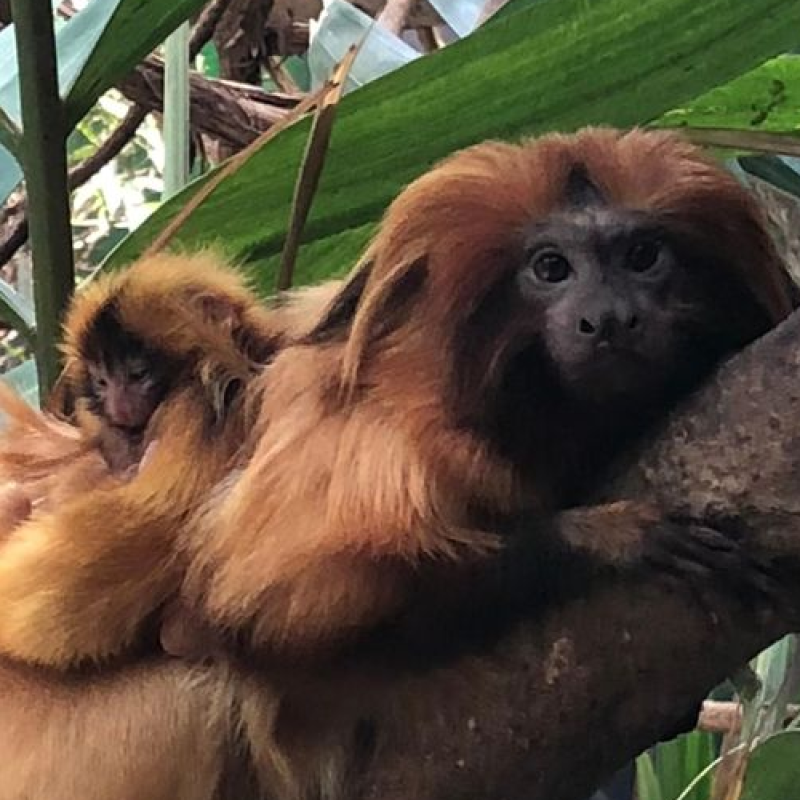The National Zoo’s Golden Lion Tamarins Delight Curators with the Delivery of Twins


On Friday, June 29, the Smithsonian’s National Zoo celebrated the birth of two golden lion tamarins to first-time parents Mo and Izzy. While infant mortality rates are high among golden lion tamarins, with 50 percent dying during the first year of life, both infants and their new mother appear “healthy and strong,” says Zoo curator Steven Sarro. The birth of the tamarins was the first for the Zoo in a decade.
Golden lion tamarins remain endangered in their native home of Brazil. In coastal forests, their numbers dipped to as few as 200 in the early 1970s due to continued habitat destruction. Thanks to conservation efforts championed in part by the National Zoo, breeders and zoologists around the world have redoubled efforts to preserve the species through the Golden Lion Tamarin Conservation Program.

Today, about 3,200 golden lion tamarins live in the wild, with an additional 500 cared for and studied in zoos around the world. About a third of free-living tamarins are descendants of relatives raised under the care of humans; however, due to the fragile state of the tamarins’ South American habitats, no tamarins are currently being released beyond zoo walls.

Zoo curators entered the tamarin habitat Friday morning to a happy surprise: two newborn infants clinging to mother Izzy’s backside. Izzy had been suspected to be pregnant for weeks due to recent weight gain. Tamarins typically breed between September and March, gestating for about four and a half months, and twin births are typical.

Golden lion tamarins are highly social, living in family groups of two to eight, typically with only one active breeding pair. After the first few days with their mother, newborn tamarins will spend most of their infancy in the care of their father, who ferries them on his back. While mothers take the infants to nurse, they ultimately return to them to the sire’s side.

“It’s an equal opportunity kind of pairing,” says Sarro.

Zoo curators have already observed the twins latch onto to Mo’s back. At about five weeks of age, the newborns are expected to begin exploring their new environment, weaning off their mother’s milk around three months. The family will remain as a unit as the new tamarins reach maturity. At 11 and five years old respectively, Mo and Izzy are monogamous and maintain “a strong pair bond,” says Sarro. They are expected to produce at least one or two more litters according to breeding recommendations from the Golden Lion Tamarin Species Survival Plan. Tamarins in captivity usually live to the age of 15.

“It’s been 10 years since we’ve had baby tamarins here,” Sarro says. “It’s an endangered species that the Smithsonian has been working on for years. It’s a real feather in our cap.”


Brain-meltingly cute.....
Cute beyond words.
It's also good to read that they are being brought back for the edge of extinction. The wanted destruction of the forest in Brazil has taken many species including humans to the edge of extinction.
Awwww... so absolutely cute!!
And you are right about the damage to the rain forest. If it goes, so does all animal life.